Hello people, today a very laid-back blog before the one about the Hello Pervert scam email. Today between study sessions and house chores hours, I spent most of my time listening to Uranus EM "sounds" recorded by NASA and playing with this tool called Eyes of the Solar System. It uses data and images from NASA missions to give a simulated view not only of Uranus but also all objects in the Solar System (you can find Spacecrafts too!). What I loved the most, asides from the celestial bodies themselves, was the spatial sense of orientation it gave me. I also had to deal with a bit of astromegalophobia (especially at the Milky Way galaxy and Sun part) which can be quite annoying because it's not nice to fear something you love XD
Anyhow, I would like to share some screenshot I took with you, so let's start:
-The looming towering mass of Jupiter
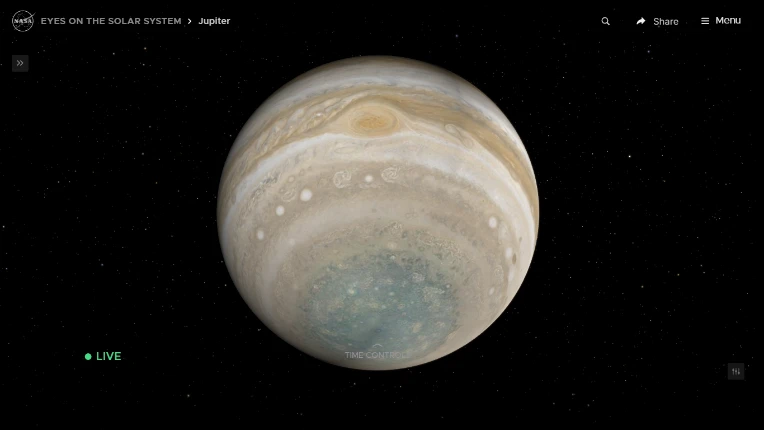
I loved taking different picture of this massive gas giant and this one was particularly great to share as it features the Great Red Spot. It's a persistent storm on Jupiter, known as the largest storm in the solar system, with winds reaching up to 432 km/h. It's located 22 degrees south of Jupiter's equator and it was first observed in September 1831, with 60 recorded observations between then and 1878, when continuous observations began. A similar spot was observed from 1665 to 1713 and if this is the same storm, it has existed for at least 360 years. Studies predict Jupiter’s upper atmosphere has clouds consisting of ammonia, ammonium hydrosulfide, and water. Still, scientists don’t know exactly how or even whether these chemicals react to give colors like those in the Great Red Spot. I just love how the planet seems "judging" you with its imposing size and I chose this angle to take the screenshot in order to highlight this feel.
-Totally not Iapetus's magnetic field
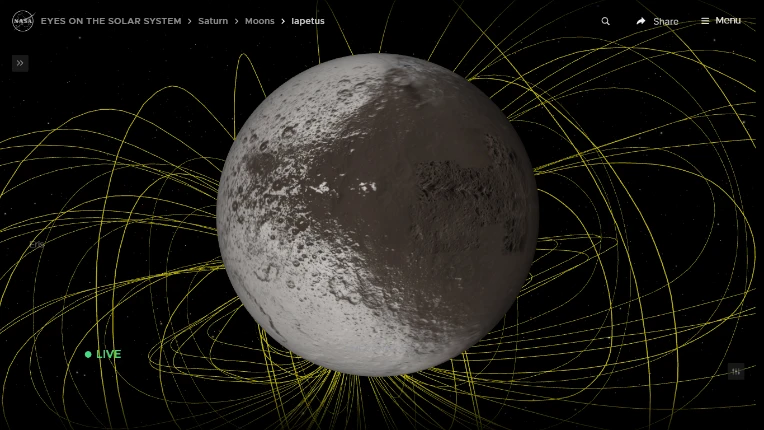
This is my favourite Saturnian moon which has been called the yin and yang of the Saturn moons because its leading hemisphere has a reflectivity (or albedo) as dark as coal (albedo 0.03-0.05 with a slight reddish tinge) and its trailing hemisphere is much brighter at 0.5-0.6. As you know John Herschel suggested that the moons of Saturn be associated with the mythical brothers and sisters of Chronos (the Greek equivalent of Saturn Roman god). Its name comes from the Greek god (or Titan) Iapetus, who is a son of Uranus and Gaia, a brother to Chronos and the father of Atlas and Prometheus. As the father of Prometheus, the ancient Greeks regarded Iapetus as the father of the human race. Cassini referred to Iapetus as one of the four Sidera Lodoicea (Stars of Louis) after King Louis XIV (the other three were Tethys, Dione and Rhea). Other astronomers called Iapetus by its number in the order of moons discovered at the time. Iapetus started as Saturn V, and it became Saturn VIII after additional moons were discovered. Geological features on Iapetus generally get their names from the French epic poem "The Song of Roland." It's Saturn's third largest moon with a mean radius of 736 km and a density only 1.2 times that of liquid water. It orbits at 3,561,000 Km from Saturn, but despite this great distance, our Lord of the Rings has tidally locked Iapetus. The moon always presents the same face toward Saturn (you can have a nice view of the rings of Saturn from there!). This beauty will forever be in my heart and I cannot ignore the beautiful equatorial ridge that characterizes this moon.
-Pluto and Charon

Never thought to live in a time where I could finally see how Pluto looks like, considering that when I first learned about its existence back in the 90s and saw both photos and artistic renditions my mind created the most different looks for this planet....oops dwarf planet because we know that in 2006 it was re-classified as a dwarf planet by the International Astronomical Union. It located in a distant region of our solar system beyond Neptune known as the Kuiper Belt. Despite being named after the Roman god of the underworld, Pluto, this dwarf planet has a lovely aspect with its "heart". According to the 2006 IAU Resolution, "a dwarf planet is an object in orbit around the Sun that is large enough to pull itself into a nearly round shape but has not been able to clear its orbit of debris." And this is the element that had it reclassified. I still remember when a lovely kid asked astronomers "can you fix Pluto?", awwwwww. On average, Pluto’s temperature is -232°C, making it too cold to sustain life. Pluto is orbited by five known moons, the largest of which is Charon. Charon is about half the size of Pluto itself, making it the largest satellite relative to the planet it orbits in our solar system. Pluto and Charon are often referred to as a "double planet." Venetia Burney was the girl who named Pluto, at that time she was 11 years old.
-Saturn's North Pole
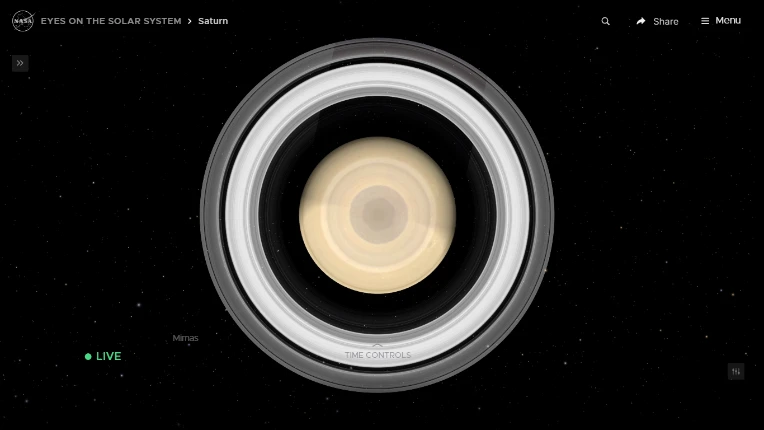
I wanted to take this screenshot of Saturn seen from its northern pole because if you pay attention, you can see its iconic yet enigmatic hexagon which can be found in the atmosphere at about 78°N. The entire structure rotates with a period of 10h 39m 24s (the same period as that of the planet's radio emissions) which is assumed to be equal to the period of rotation of Saturn's interior. This feature does not shift in longitude like the other clouds in the visible atmosphere. The pattern's origin is a matter of much speculation. Most scientists think it is a standing wave pattern in the atmosphere. Polygonal shapes have been replicated in the laboratory through differential rotation of fluids. I find fascinating and unsettling at the same time that the south pole storm may have been present for billions of years. This vortex is comparable to the size of Earth, and it has winds of 550 km/h. Saturn is majestic and to me it will always be my Lord of the ring even when it will lose permanently them in 100-300 millions of years from now.
-My Childhood Comet: Hale-Bopp

Comet Hale-Bopp (C/1995 O1) was discovered on July 23,1995, by two independent observers, Alan Hale, and Thomas Bopp. Due to its large size, this comet was visible to the naked eye for 18 months in 1996 and 1997, and I still remember when I could see it from my bathroom with turned off lights. It was a powerful experience seeing this celestial body crossing the starry sky with its unique tail, so luminous and wonderful. It takes about 2,534 years for Hale-Bopp to orbit the sun once. Hale-Bopp last reached perihelion (closest approach to the sun) on Apr. 1, 1997. Comets are usually named for their discoverer(s) or for the name of the observatory/telescope used in the discovery. Since both Alan Hale and Thomas Bopp discovered this comet it is named for them. The letter "C" indicates that C/1995 O1 (Hale-Bopp) is a long-period comet and is not expected to return to the inner solar system. 1995 indicates the year of discovery.
-Uranus's faint rings
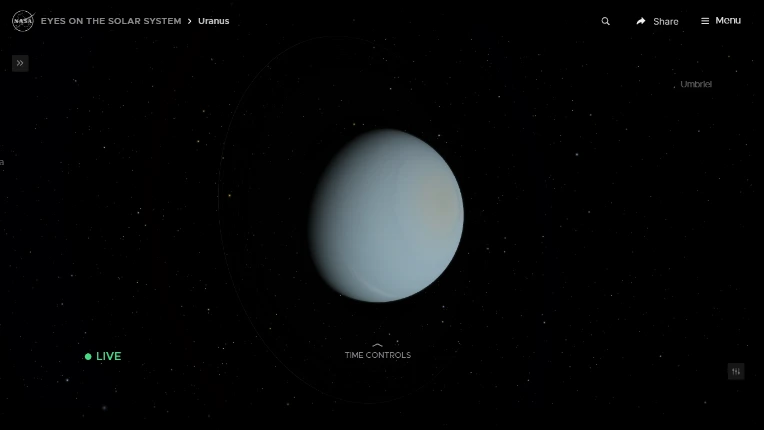
The program allows you to set natural light, hence the apparent low brightness of this beautiful planet. If you look carefully, you'll notice its 13 planetary rings. were discovered on March 10, 1977, by James L. Elliot, Edward W. Dunham, and Jessica Mink. William Herschel had also reported observing rings in 1789. In the order of increasing distance from the planet the 13 known rings are designated 1986U2R/ζ, 6, 5, 4, α, β, η, γ, δ, λ, ε, ν and μ. Their radii range from about 38,000 km for the 1986U2R/ζ ring to about 98,000 km for the μ ring. Additional faint dust bands and incomplete arcs may exist between the main rings. As you can notice in the pic, the rings are extremely dark—the Bond albedo (the fraction of power in the total electromagnetic radiation incident on an astronomical body that is scattered back out into space) of the rings' particles does not exceed 2%. They are probably composed of water ice with the addition of some dark radiation-processed organics.
https://science.nasa.gov/asset/hubble/rings-of-uranus/
-Sun's heliosphere
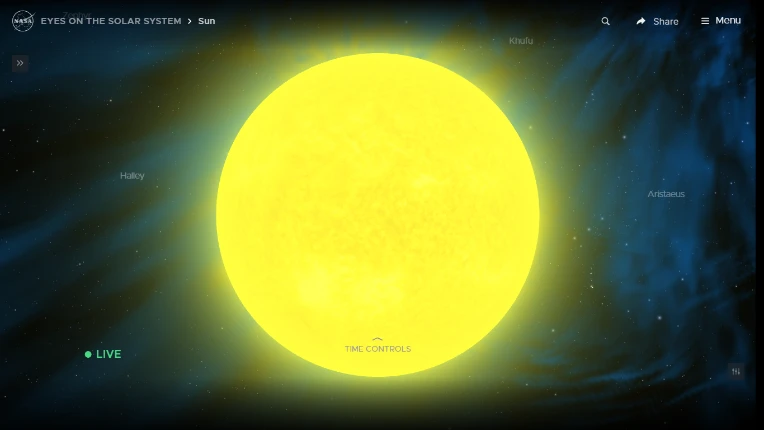
The heliosphere is the magnetosphere, astrosphere, and outermost atmospheric layer of the Sun. It takes the shape of a vast, tailed bubble-like region of space. In plasma physics terms, it is the cavity formed by the Sun in the surrounding interstellar medium. The "bubble" of the heliosphere is continuously "inflated" by plasma originating from the Sun, known as the solar wind. Outside the heliosphere, this solar plasma gives way to the interstellar plasma permeating the Milky Way. the solar wind extends far beyond even the region of Pluto until it encounters the "termination shock", where its motion slows abruptly due to the outside pressure of the interstellar medium. The "heliosheath" is a broad transitional region between the termination shock and the heliosphere's outmost edge, the "heliopause". I originally thought heliosphere surrounded only the Sun....how wrong I was:
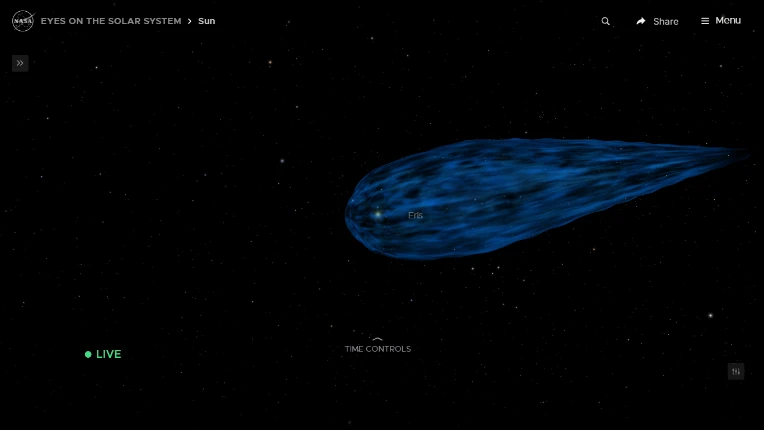
You can notice Eris, another dwarf planet of the Kuiper-Edgeworth belt soooooo....
-Earth my love
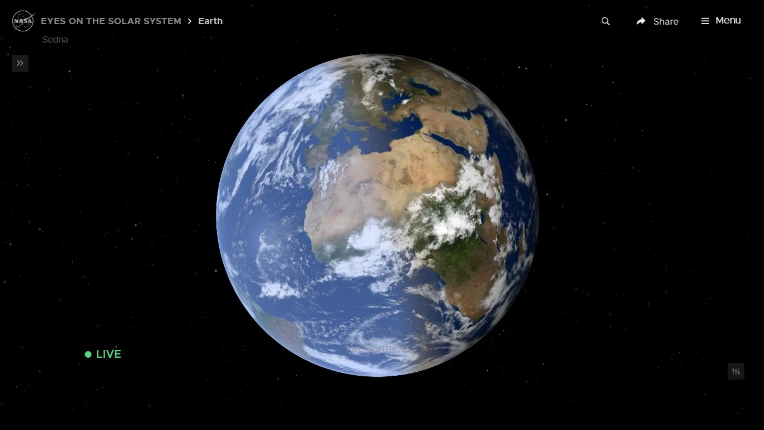
How not including Earth the home that hosts all of us? And how do we thank her after what she does for us? Treat her like trash and see her like mere property. We don't deserve this planet and I strongly disagree with colonizing other planets if the forma mentis is the same that is poisoning this planet. First solve the shit you caused and after understanding planets are not objects to exploit, then you can go beyond your cosmic boundaries. Sometimes I'm tempted to see this planet as a living being (Gaia hypothesis) where I see scavengers as the macrophages of the planet, fungi as the neural system of the planet, winds, temperature, oceanic currents as parts of feedback similarly to an organism feedback system, BUT that's a personal thought of mine which I keep separated from my more scientific mind. Sorry no scientific data here, just a small vent.
Some pics from NASA: https://www.nasa.gov/gallery/earth/
-Voyager 1 detail: close-up
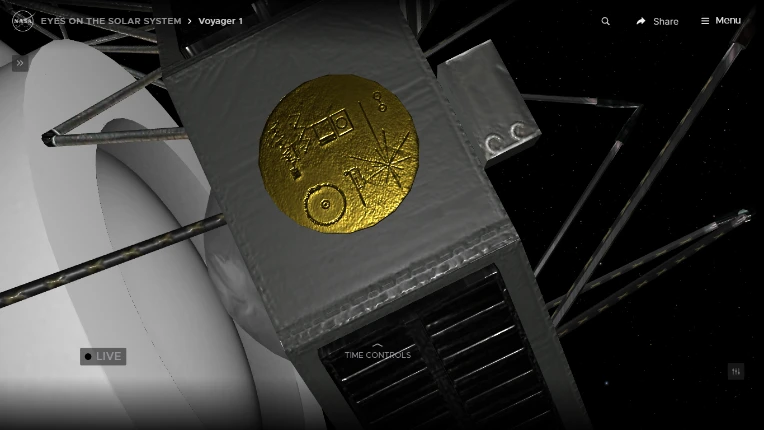
I really loved the fact the site gives you opportunity details by zooming in the object, in this case the he Voyager Golden Record attached to one of the bus sides. The Voyager spacecraft each weighed 815 kg at launch, but after fuel usage are now about 733 kg. Of this weight, each spacecraft carries 105 kg of scientific instruments. The identical Voyager spacecraft use three-axis-stabilized guidance systems that use gyroscopic and accelerometer inputs to their attitude control computers to point their high-gain antennas towards the Earth and their scientific instruments towards their targets, sometimes with the help of a movable instrument platform for the smaller instruments and the electronic photography system. More info about Voyager 1: https://science.nasa.gov/mission/voyager/voyager-1/
That's all as I can't post more pics (I've reached the limit), but I had fun exploring the Solar System and discovering fun things (Phobos being closer than Deimos for example or learning how to orient myself using probes, spacecraft and TNOs to find other celestial bodies). I highly suggest you to use the site I mentioned at the beginning of the blog, you'll have fun^^
Bye!

![Planet X [SolarBalls]](https://art.ngfiles.com/thumbnails/4732000/4732132.webp?f1752011176)
![Thirty years of Creativity [NG Locker Collab]](https://art.ngfiles.com/thumbnails/4727000/4727310.webp?f1751804716)




















